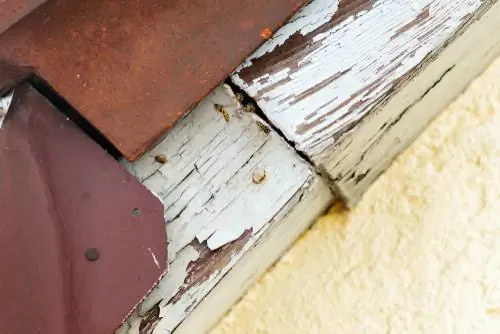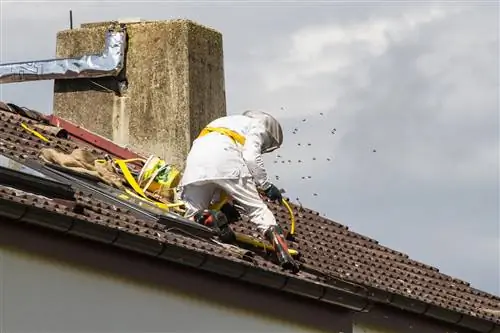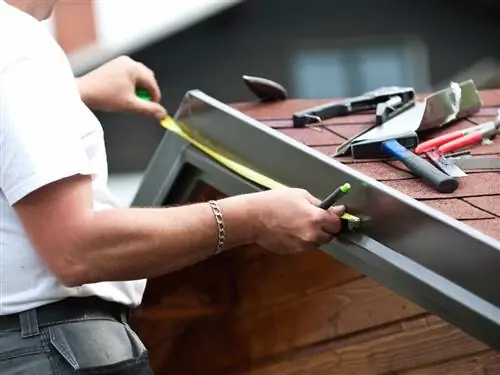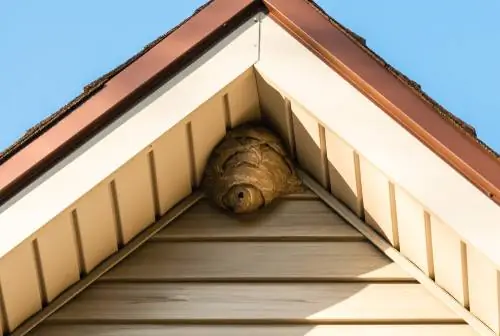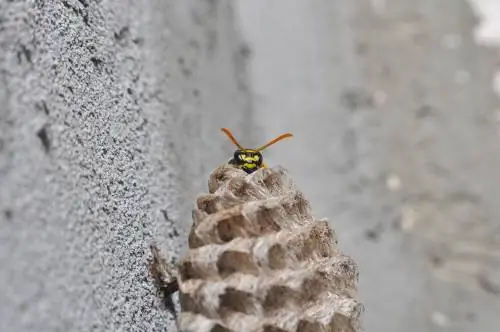- Author admin [email protected].
- Public 2023-12-16 16:46.
- Last modified 2025-01-23 11:22.
Wasps prefer dark, dry and protected places to build their nests - preferably close to people. Attics meet these conditions perfectly. If you don't want to have a wasp colony under your roof, you should make access more difficult for the animals.
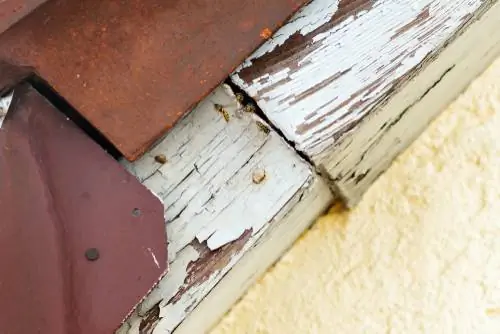
How do I prevent wasps under the roof tiles?
To prevent wasps under the roof tiles, you should identify and close possible access points. Repair damaged or broken roof tiles and seal gaps with mortar. Treat porous tiles with deep primer and strengthen the roof beams with environmentally friendly wood protection glaze.
What makes house roofs so interesting for wasps
When we talk about wasps that like to nest under our roofs, we are primarily talking about two types of short-headed wasps, namely the German wasp and the common wasp. These species belong to the social, i.e. community-forming, wasps. Of all socially living species, they are by far the largest colonies - with around 7,000 individuals. That's a powerful number and all the more impressive given the species' preference for building nests close to humans.
What do German and common wasps like about us humans? There are several reasons. Especially beneficial ones like:
- Human houses offer many ideal nesting sites
- There are always lots of goodies to pick up from people
The many other wasp species that are less known to most laypeople could also enjoy these advantages, but are too shy. German and common wasps, on the other hand, are notorious for not being shy about demanding their share of cake, ice cream or cold cuts, especially at the dinner table in the garden.
Cozy nesting under the roof
They are also not timid when it comes to nesting. If they can gain access to a dark, dry attic, they won't hesitate. Especially at the top under the roof ridge, young queens find ideal conditions for building their nests in spring. Of course, it is particularly inviting if the roof structure consists of older wooden beams - because the wasp can easily gnaw off their rotten surfaces and does not have to fly out to get building materials.
Identify weak points on the roof
Older houses in particular are popular candidates for nesting sites for wasps. This is also because they tend to offer more access. Wasps can easily slip under irregularly staggered or damaged roof tiles and through cracks in the mortar. If you want to prevent wasps from nesting in your attic, it is advisable to identify and eliminate such weak points. It is best to do this as early as possible, i.e. before the nest building phase by the young queens begins in spring.
When closing possible entry points on the roof, simply arm yourself with mortar made from sand, water and cement and a spatula (€14.00 on Amazon). You can easily fill smaller gaps between individual roof tiles. If possible, you should replace damaged, completely broken bricks. As a preventive measure, bricks that appear porous should also be strengthened by treating them with deep primer. For larger gaps, it is recommended to incorporate fiberglass fleece into the mortar.
Also examine the masonry under the roof for possible weak points.
You should treat the wooden beams of the roof structure, especially if they are older, with an environmentally friendly wood protection glaze.

